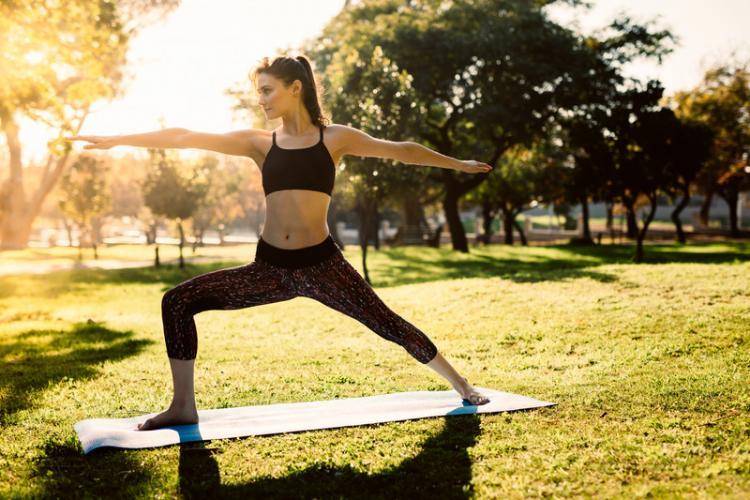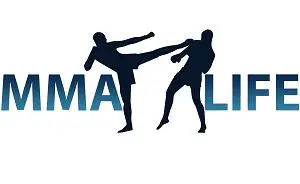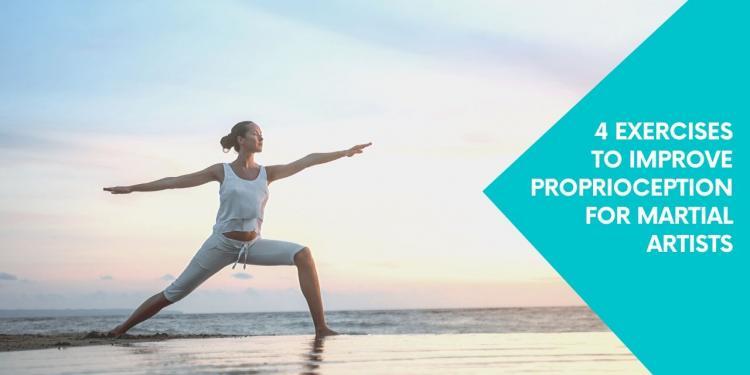Some call it the “sixth sense” of movement, but there’s nothing mystical about proprioception. When trained and strengthened, your level of proprioception can elevate your performance both on and off the mat.
More...
What Exactly is Proprioception?
Also known as kinesthesia, proprioception is being intimately conscious of where your body is, how it’s moving, and where it’s going in movement. Think of a judoka automatically regaining his balance after almost being thrown or a jiu jitsu player posting to avoid being swept.
"Proprioception is the awareness of the body in space,” explains Christopher M. Norris PhD MSc MCSP, in the athletic manual Managing Sports Injuries (Fourth Edition). “It is the use of joint position sense and joint motion sense to respond to stresses placed upon the body by alteration of posture and movement.”
That's quite the mouthful. In essence, when you enhance your proprioception, you're better able to sense, direct and control how your body moves without actively pausing and thinking about that movement.

A common example would be walking. Most people can walk without having to “think” about it. You aren't consciously telling yourself, "Okay, now move your right foot 12 inches ahead of you. Great, now move your left foot and bring it up to where your right foot is." You’ve practiced this type of proprioception since you’re a toddler, and unless you have a mobility or health issue, you can stand up and walk without “willing” yourself to do it.
In terms of physiology, biology and neurology, proprioception boils down to a simple feedback loop between your brain (and nervous system) and your body. As you move, your joints, muscles and skin send signals to your brain and your brain immediately routes that back to your body, allowing you to move in a rhythmic flow without thinking through each step or stage.
In athletics and MMA, proprioception can thus bring a lot of benefits for movements like tumbling or grappling.
Proprioception in Martial Arts
In martial arts, one of the greatest fighting benefits of proprioception is improving your reactive ability (your ability to react to movement and also to self-correct as you move).
Brazilian jiu jitsu GOAT Marcelo Garcia is often known as the "scrambling king." When you watch him move in a match, his movements appear chaotic and spontaneous, yet his timing is perfect.
You can tell he’s perfected proprioception, with his body reacting to each of his movements (and his opponent’s movements) effortlessly and without delay.
Other benefits of proprioception for martial arts include:
- Improving balance and self-correcting so you don't fall
- Enhancing overall coordination
- Boosting postural control, which can enhance dynamic strength when throwing punches, kicking, etc.
- Increasing hand-eye or foot-eye coordination, allowing you to more effortlessly dodge and fight
Exercise to Improve Proprioception in Martial Arts
1. Stability Ball Drills
It goes without saying that training with a stability ball isn't the same as fighting and training with a real person, but ball drills bring great potential for your proprioception. BJJ fighters are especially big fans of ball drills, but fighters of other martial arts backgrounds will also benefit.
Examples include:
- Toreando guard pass drill: Start with the outside foot stepping first, then the inside foot, as you move the ball side to side with each pass.
- Cartwheel pass with sprawl: Do a cartwheel over the ball and end with a sprawl on the other side.
- Leg swings with hip drop: Swing one leg over the ball and drop your hip down onto the ball, then repeat from the other side.
To take it further, perform other positions on the ball itself. For example, you can do a knee mount, drop spin, and kick pass on the stability balls.
To ramp up the proprioception-building element, try:
- Doing these movements on a ball with your eyes closed
- Standing on a ball while performing martial arts movements
2. Turkish Get-Ups
This multi-joint movement requires a strong mind-muscle connection, enhances your proprioception and improves your ability to do multiple movements at the same time using both sides of your brain. In other words, everything you need to do well in a fight.
Lie down on the floor with your left leg bent at 90-degrees, your right heel pressed into the ground, your right arm flat on the ground and your left arm in the air holding a weight (e.g. a kettlebell or dumbbell).
Contract and tighten your core muscles, then press down with your right elbow and left foot to rise to a seated position.
With your core still tight, lift your hips into a glute bridge while keeping the rest of your body stable. Most importantly, the arm in the air should remain straight and extended.
Slide your right leg under you, sit back and rise into a lunge position with your left foot forward and your weighted arm now straight above your head.
Finally, step forward and stand. Then, repeat the above in reverse order to return to a prone, lying position.
Repeat for the other side. Hint: This advanced move often confuses people. A good reminder is that the straight arm in the air should always be on the same side as your bent leg.
3. Squats on a Bosu Ball
Any sort of movement on an unstable surface helps improve your coordination and proprioception.
This specific exercise is especially useful for martial artists because it builds balance, leg coordination (ideal for kicks and sweeps) and leg strength.
Simply set a Bosu ball on the floor, stand on it and perform squats. You can mix it up with jump squats, traditional squats, pulse squats (perfect for strengthening those hip flexors) and single-legged squats (an advanced move for exceptional balance and coordination). To increase the difficulty, flip the bosu ball around so that you are standing on its solid surface while squatting.
4. Yoga

Yoga’s benefits for proprioception run quite deep. Besides the obvious benefits to your mobility and muscular strength, yoga requires an elevated sense of body movement and breath, as well as awareness of joint placement and flexion, which you can carry from the yoga mat into the fighting ring.
Yoga also both stimulates and calms your nervous system, which improves that feedback loop between your brain and your body.
Athletic forms of yoga that may be beneficial for your martial arts practice include:
- Hot Vinyasa yoga (relatively intense and ideal for strength building)
- Power yoga (an intense form of Hatha yoga that requires more advanced movements, and thus more proprioception)
- Ashtanga (exceptional for body balance due to repetitive flows)
- Vinyasa (perfect for body control and cardio)
Putting It Into Action
These four exercises are just the start. You can build your proprioception with any sort of exercise that requires coordination and balance.
You can even emphasize proprioception with whatever training routine you're already doing by adding instability (using a Bosu ball, stability ball, balance board, etc.), reducing your senses (e.g. closing your eyes while performing the movement) or trying to do the movement in a single-leg stance.




